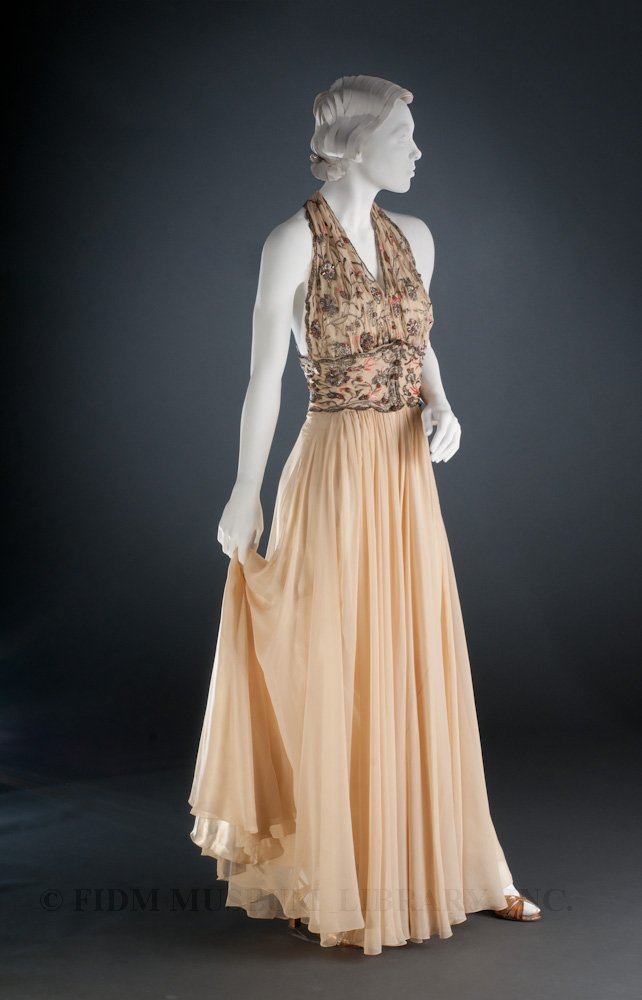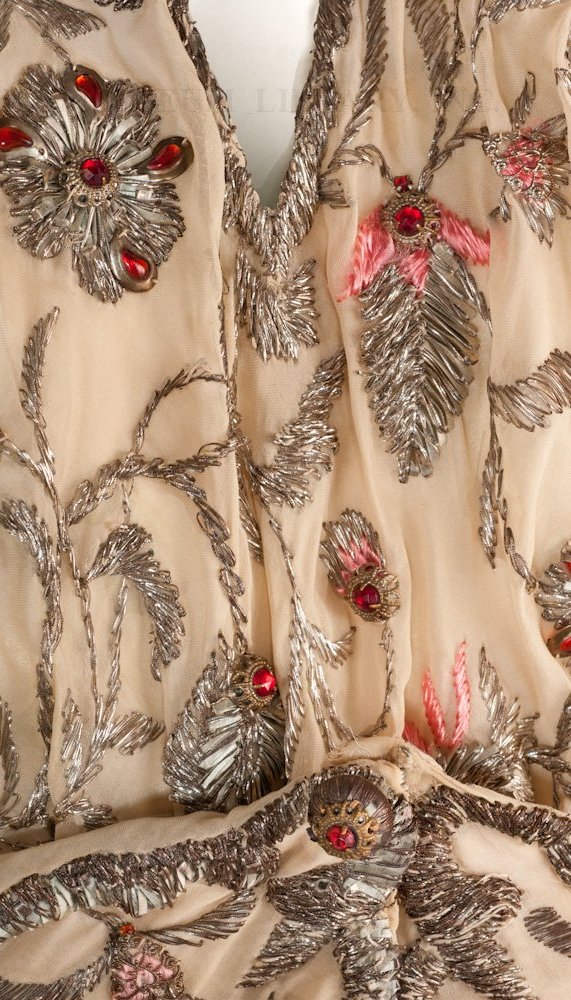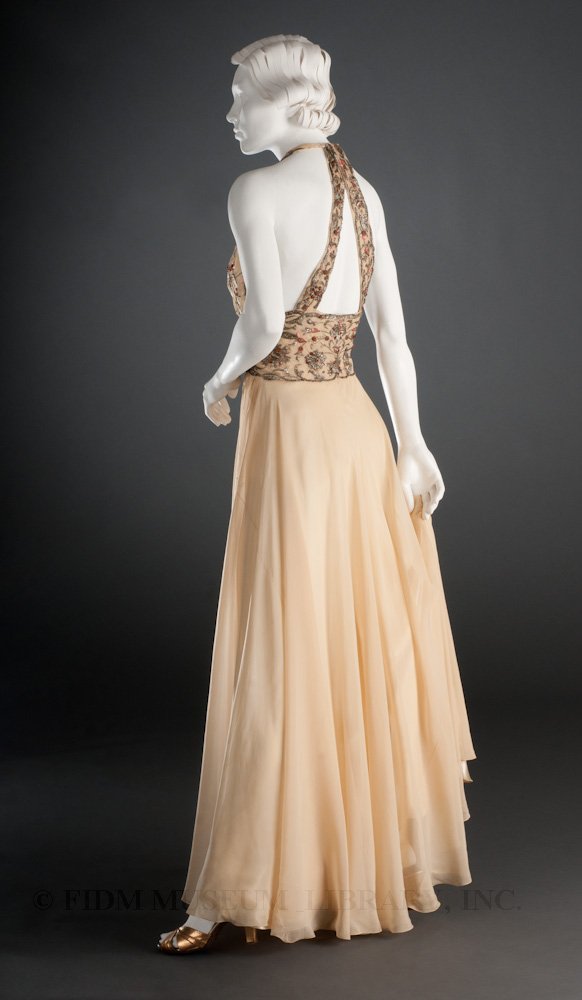French couturier Madeleine Vionnet was born on this day in 1876. Born in Chilleurs-aux-Bois, about 75 miles from Paris, Vionnet was apprenticed to a local dressmaker at age 11. She spent several years in this first apprenticeship, moving to a small design house in Paris when she was 17. She later worked in London for several years, returning to Paris by 1901, where she worked first for Callot Soeurs and later for Doucet. In 1912, Vionnet opened her own salon, but closed the business at the beginning of World War I in 1914. After spending the war years in Italy, Vionnet returned to Paris and re-opened her couture house in 1918.
Though Vionnet began her training in the late 19th century, when artifice and decoration were the foundations of fashion, she developed a startlingly modern, deceptively simple approach to design. Many of her garments were based on simple geometric forms; square, circle or rectangle. The bias cut was integral to her work, and largely eliminated the need for shaping darts. Vionnet disliked corsets, and designed her garments to be worn without this confining undergarment. House models were encouraged to go without undergarments during fittings.
In honor of Vionnet’s birthday, we’re reposting a late 1930s Madeleine Vionnet evening gown embellished with metallic embroidery. We first posted this gown in October 2011, when the gown was on exhibit in the FABULOUS! exhibition.
 Evening gown
Evening gown
Madeleine Vionnet
c. 1936-1938
Museum Purchase, Funds provided by Mrs. Tonian Hohberg
2008.5.50AB
Vionnet’s primary concern was the form of a garment and how the garment related to the body. Working on her legendary wooden mannequin, Vionnet draped, cut, and slashed plain muslin toiles until a satisfactory design emerged. A suitable textile was chosen only after the design was complete. Vionnet herself tended towards neutrals, as she acknowledged in a 1937 interview: “I like black and white. They are pure color. Next to them, I like natural colors like the blue and green of eyes and red of lips.”1 In lieu of color, Vionnet often created textural contrasts by using different sides of the same fabric, or by pairing different textures in the same garment. If a patterned or brightly colored textile appeared in a Vionnet design, it was probably selected by Marcelle Chaumont, the premiѐre of Vionnet’s atelier. Chaumont’s color sense mediated Vionnet’s taste for neutrals.
Though Vionnet may have been most concerned with form, many of her garments feature sophisticated, carefully placed embellishment. Aware that her creative strength was in dressmaking, not surface design, Vionnet hired designers to create patterns for textile and surface decoration. From 1919 to 1925, she worked closely with Thayaht. In addition to creating surface designs for Vionnet, he illustrated her garments for the French fashion journal La Gazette du Bon Ton. In 1918, Vionnet hired Marie-Louise Favot. A dressmaker and trained artist, Favot (nicknamed Yo because Vionnet already employed another Marie-Louise) designed all of Vionnet’s embroidery motifs. Though the motifs were designed in-house, the actual work was contracted out to Michonet, a Parisian embroidery firm founded in 1858. Because so many of Vionnet’s designs were cut on the bias, innovative techniques were used to apply surface decoration. For example, embroidery stitches were angled to follow the grain of the bias-cut fabric so as not to interfere with the drape.
Yo worked particularly closely with one Michonet embroiderer, Albert Lesage. (Hopefully this name rings a bell!) Lesage purchased Michonet in 1922, changing the name of the firm to Lesage. Soon afterwards, Albert Lesage and Yo were married. Their son, Francois Lesage, ran the house from 1949 until he passed away in December 2011. Today, the firm produces both private commissions and designs for ready-to-wear and haute couture.
Given what we know about Vionnet’s atelier, Yo probably designed the bodice embroidery, which was then executed by Lesage’s embroiders. The chiffon foundation is embroidered with silk and metallic thread in a pattern of twining vines and flowers, accented with rhinestones and glass cabochons. Looking beyond the lovely surface embellishment, Vionnet’s construction techniques are evident in the unstructured bodice. Instead of using bust darts for shaping, the fabric is gathered and twisted around the neck; this technique pulls the fabric close to the body, ensuring a close fit without the use of darts. The wearer’s back is left nearly bare, accented by embroidered straps. A cummerbund wraps around the waist, compressing the excess chiffon into soft gathers.
1 Kirke, Betty. Madeleine Vionnet. San Francisco: Chronicle Books, 1989: 175.




Wonderful post. Thank you!